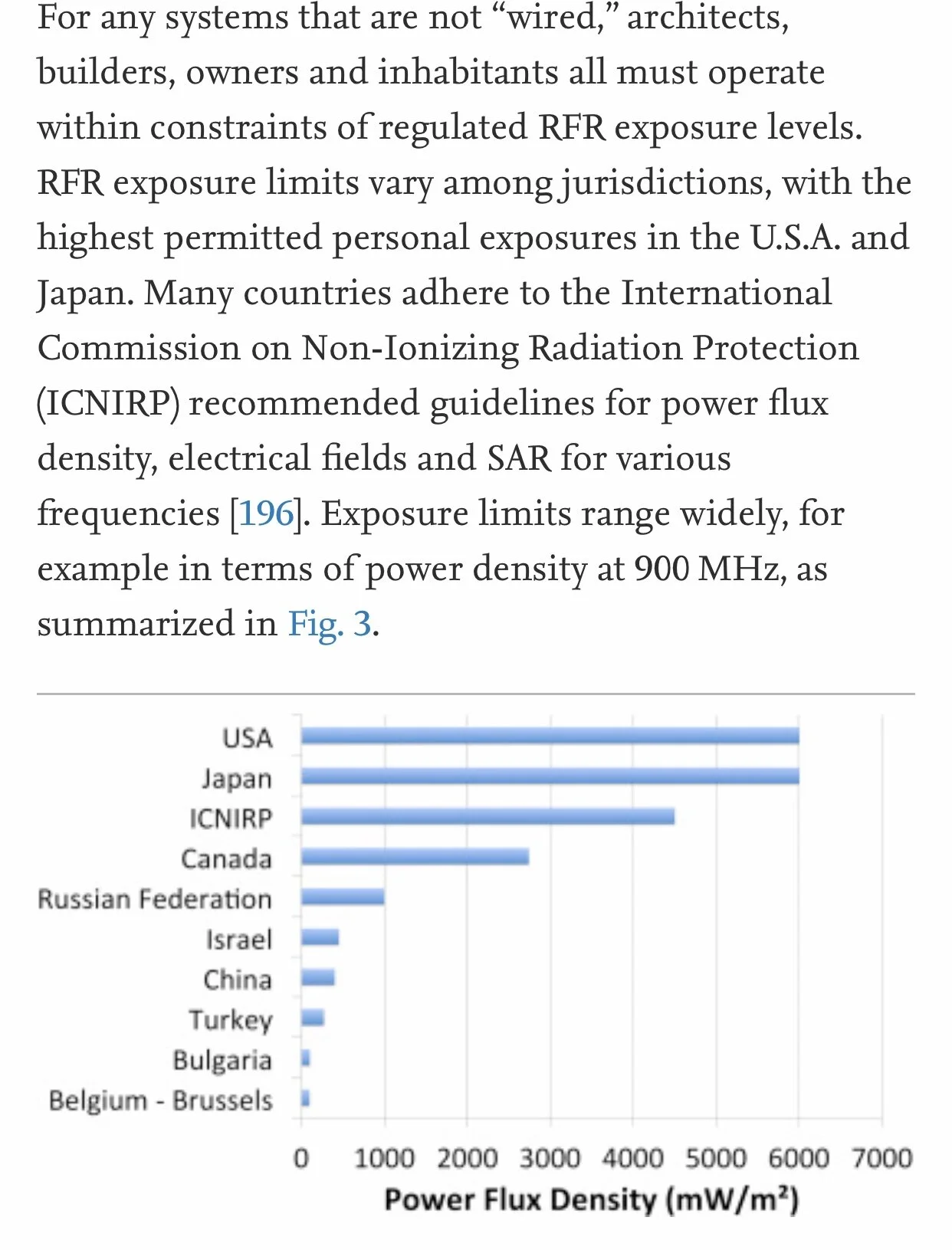Today engineers, architects, planners and others are challenged to keep abreast of research and policies that address potential harm from wireless technology.
This paper builds on long-standing recommendations to expand the typical scope of building science to consider RFR. It briefly describes RFR in the electromagnetic spectrum, use of wireless technology in “smart” buildings, and summarizes peer-reviewed, scientific research regarding biological effects on human and environmental health.
Key reasons as to why action should be taken include potential liability risks when technology is not implemented safely. International measures and guidelines for lower RFR exposure are highlighted. Finally, practices are outlined and recommendations made to minimize the impact of RFR on public and environmental health in the design, construction and maintenance of safer, modern buildings.
Read the paper here: https://www.sciencedirect.com/science/article/pii/S0360132319305347?via%3Dihub
Radiofrequency radiation & the built environment
Radiofrequency radiation (RFR), used for wireless communications and “smart” building technologies, including the “Internet of Things,” is increasing rapidly. As both RFR exposures and scientific evidence of harmful effects increase apace, it is timely to heed calls to include low RFR levels as a performance indicator for the health, safety and well-being of occupants and the environment.
Researchers have long criticised the SAR as an inadequate metric as it is measured in a mannequin – a liquid-filled phantom [19]. This does not capture the complex characteristics and interactions of living tissues' electromagnetic properties, or of RFR signals.
Adverse biochemical and biological effects at commonly experienced RFR levels indicate that exposure guidelines for the U.S., Canada and other countries are inadequate to protect public health and the environment.
Some industry liability insurance providers do not offer coverage against adverse health effects from radiation emitted by wireless technologies, and insurance authorities deem potential liability as “high.” Internationally, governments have enacted laws, and medical and public health authorities have issued recommendations, to reduce and limit exposure to RFR.
Smart buildings? A Challenge for engineers, architects, planners
Today engineers, architects, planners and others are challenged to keep abreast of research and policies that address potential harm from wireless technology. This paper builds on long-standing recommendations to expand the typical scope of building science to consider RFR.
Green building standards for occupants’ health put great emphasis on indoor air quality, and the electromagnetic characteristics of the indoor environment are beginning to gain more widespread attention.
Wired or cabled connections are faster, more reliable and secure, emit substantially less RFR, and consume less energy in a sector with rapidly escalating greenhouse gas emissions.
As with other environmental exposures, some people are more susceptible (sensitive or intolerant) and overtly affected by RFR. Symptoms of EHS include headaches, cognitive difficulties, sleep problems, dizziness, depression, fatigue, skin rashes, tinnitus and flu-like symptoms.
An important first step to minimize levels of RFR within buildings is to eliminate indoor sources of RFR, and to connect all technologies via wire or fiber cable (“wired”).
